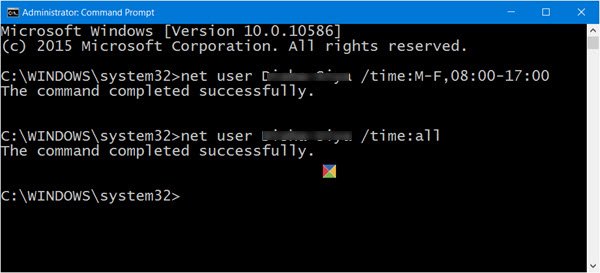

- How to add a user account using the command prompt install#
- How to add a user account using the command prompt professional#
NOTES: These directions pertain to any XP Professional workstation that you are able to remotely view through Windows Explorer (ex: \\192.168.1.100\c$), but not able to remotely view/manage printers through Windows Explorer. I hope that many of you will find a very beneficial use for this! I also believe that these steps will be helpful to some of you for other reasons as well. The steps I'm about to share with you have not only enabled us to overcome these quirks, but they've also helped us be able to remotely administer printers without ever having to interupt our physicians who need to continue using the workstations.
How to add a user account using the command prompt install#
We also are not able to install a printer through Windows Explorer because we get an access denied message (even though we have successfully authenticated to the admin share of the computer via Windows Explorer). For now, these instructions will refer to machines where no printers are shared. Some interesting quirks we've noticed are: We can navigate to "\\workstationname\c$" without any trouble, but if we navigate to "\\workstationname\" (to see a list of shares or printers), we do not see any printers, unless at least one printer on the workstation is shared. I am using these aliases since a very long time.Where I work, we have PACS workstations (running Windows XP Professional) that are owned and controlled by our vendor and are on a different subnet (which is also completely controlled by the vendor). This is a very useful way to define your own command or change the behavior of default commands. Refer to the following article: Launch your favorite apps with useful aliases from the Run dialog

Here the file c:\apps\cmd\aliases.cmd is a regular batch file which contains the appropriate DOSKEY calls.īesides the command prompt, Windows allows defining your own aliases for the Run dialog as well. You need to add the following parameters after the cmd.exe part: cmd.exe /k c:\apps\cmd\aliases.cmd To avoid this issue, you can create a new shortcut to cmd.exe or even modify the default one. The problem with aliases is that they work only for the command prompt instance where you have defined them.

doskey ls=dirĭefine global aliases in the Windows command prompt As you may or may not be knowing, LS is a default file listing command in the Linux operating system. For example, you can create the LS alias for the DIR command to use a common command for directory listing in Windows and Linux. Using DOSKEY, it is possible to define your own aliases. With the alias created with DOSKEY, the command prompt will change the active drive and the current folder automatically: Without the alias, the cd command will not change the active drive: Now, we can compare the results without the alias and with the alias. $* Symbol replaced by everything following the macro name on the command line. The following are some special codes in Doskey macro definitions: Using DOSKEY, it is possible to save your time and define an alias which will allow you to omit the requirement to enter the drive letter and the /D switch.

If the desired directory is located on another drive, you need to use the "/D" switch with the cd command or enter the drive letter in the command prompt explicitly. Using doskey, it is possible to define an alias for a new or existing console command.įor example, almost all users are familiar with the cd command which is used to change the current directory in the command prompt. There is a doskey command available in the command prompt.


 0 kommentar(er)
0 kommentar(er)
